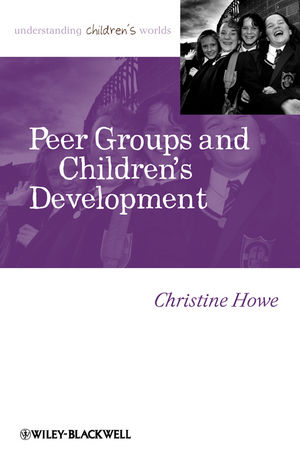|
Textbook
Peer Groups and Children's DevelopmentISBN: 978-1-4051-7944-7
Paperback
248 pages
February 2010, ©2010, Wiley-Blackwell
 Other Available Formats: Hardcover
|
||||||
Introduction.
Cultural dependency.
Theoretical framework.
Piaget and Sullivan.
Group socialization theory.
Peer groups and children’s development.
Overview of contents.
An inter-disciplinary perspective.
Chapter 2: Peer groups and classroom structure.
Introduction.
The peer group structure of classes.
Class size.
Selective assignment.
The structure of classroom subgroups.
Cultural and local influences upon classroom structure.
Size and selectivity.
Competing pressures.
Summary and conclusions.
Chapter 3: Performance and cooperation in classrooms.
Introduction.
Whole-class interaction and the performance mode.
The ubiquitous IRF.
Individual differences in performance roles.
Subgroup interaction and the cooperative mode.
Sitting in groups versus working with groups.
Cooperative learning.
Role differentiation in classroom subgroups.
Summary and conclusions.
Chapter 4: Cooperative interaction and curriculum mastery.
Introduction.
Piagetian perspectives upon cooperative interaction.
Socio-cognitive conflict, transactive dialogue and exploratory talk.
Group work in science.
Resolving differences.
Assistance and cooperative interaction.
Helping and learning.
Assistance versus contrasting.
The social impact of classroom interaction.
Selecting mechanisms.
Social judgments in classrooms.
Conclusions.
Chapter 5: Friendship, status, and centrality.
Introduction.
Children’s friendships.
Membership of friendship groups.
The qualities of friends.
Similarity and complementarity.
Peer status in formal groups.
Socio-metric relations.
Assigning status.
Beyond the classroom.
Status in friendship groups.
Ethnographic approaches.
The concept of centrality.
Conclusions.
Chapter 6: Individual differences in informal experiences.
Introduction.
Varying experiences of status.
Sociability, aggression and withdrawal.
Behavioural characteristics and status.
Behavioural characteristics in context.
Friendship and status compared.
Sociability and friendship.
Aggression, friendship and centrality.
Continuity and change.
Context dependency.
Conclusions.
Chapter 7: Social and personal adjustment.
Introduction.
Peer groups and antisocial behaviour.
Rejection and antisocial behaviour.
Friendship and antisocial behaviour.
Mutual support or bad examples.
Peer groups and personal adjustment.
Status and internalizing difficulties.
Internalizing versus externalizing.
Rejection and neglect.
The protective status of friendship.
Summary and conclusions.
Chapter 8: School performance revisited.
Introduction.
Peer groups and educational failure.
Status and performance.
Status and friendship.
Diverse consequences of friendship.
Friends and academic polarization.
Towards an integrated perspective.
Classroom practice and developmental outcomes.
Chapter 9: Implications for practice and future research.
Summary and introduction.
Remedial work with individuals.
Skills training for at-risk children.
Skills training in context.
Qualified endorsement of the cooperative approach.
Maximizing the ‘promotiveness’ of promotive interaction.
The problem of aggression.
Teacher involvement.
Future research and theoretical development.
Developing the socio-cultural perspective.
Conclusion.



